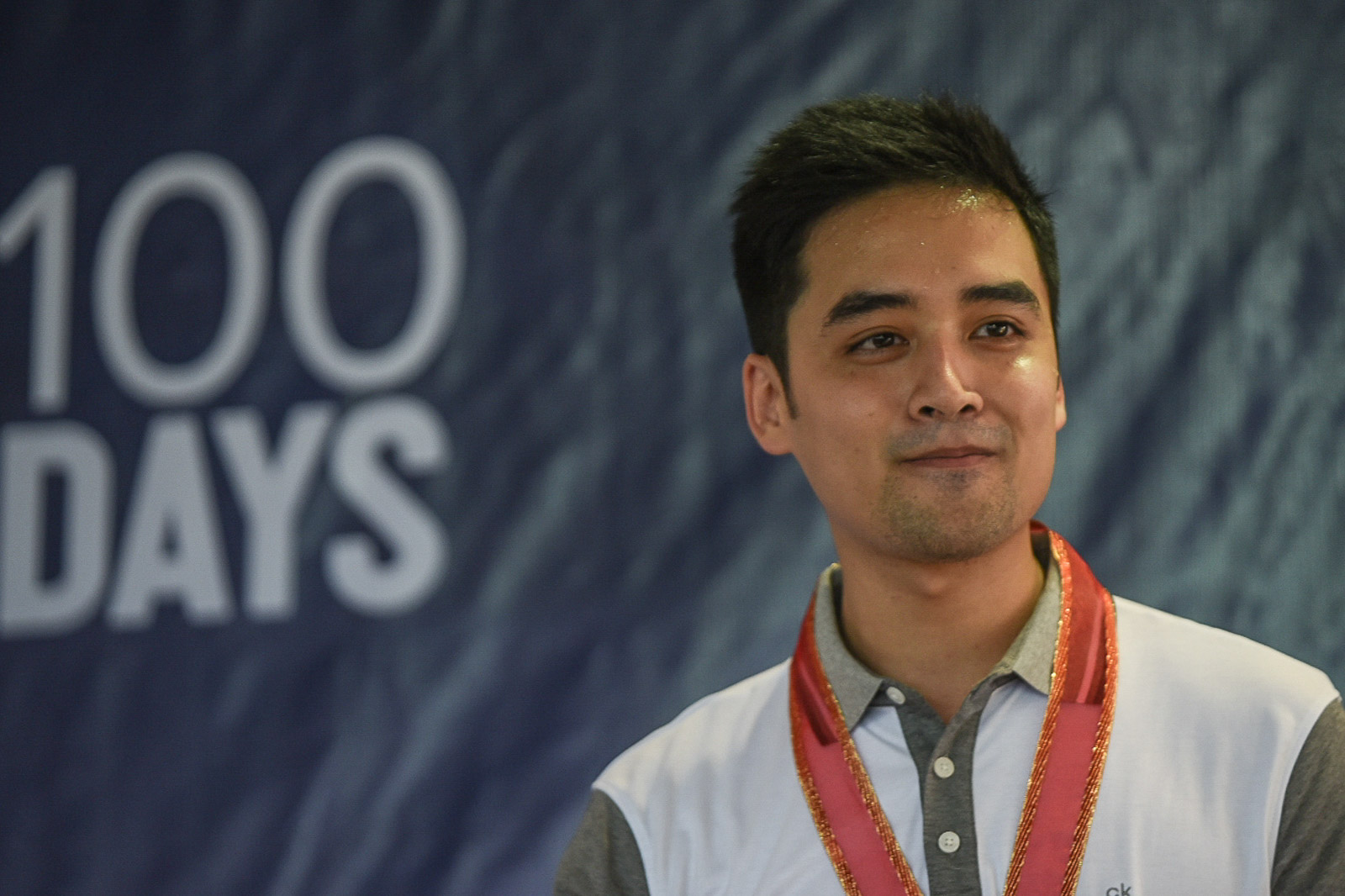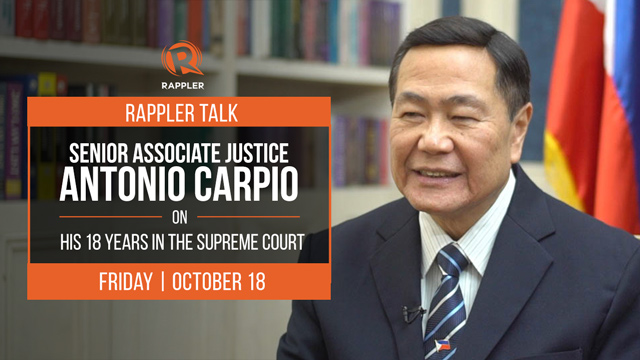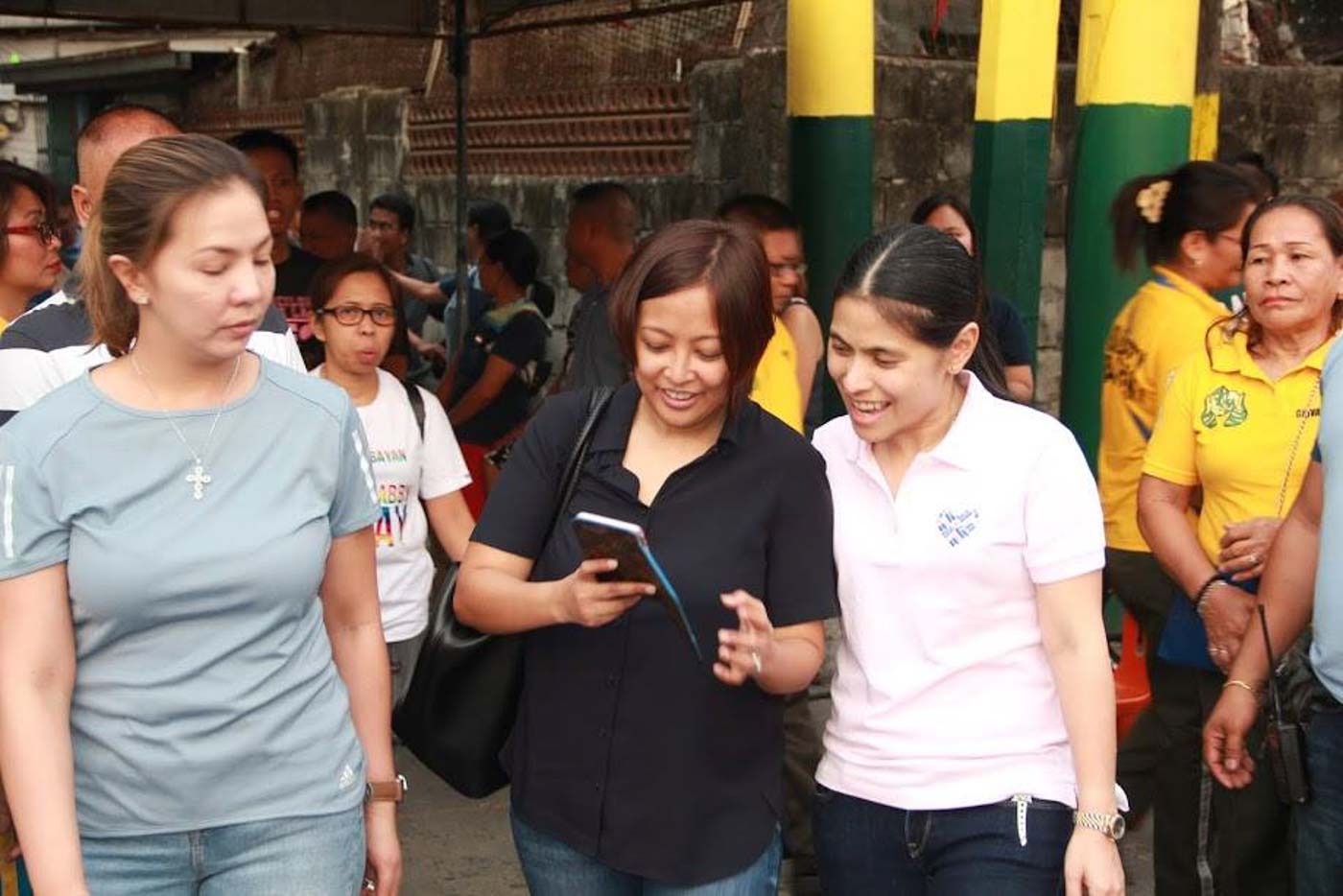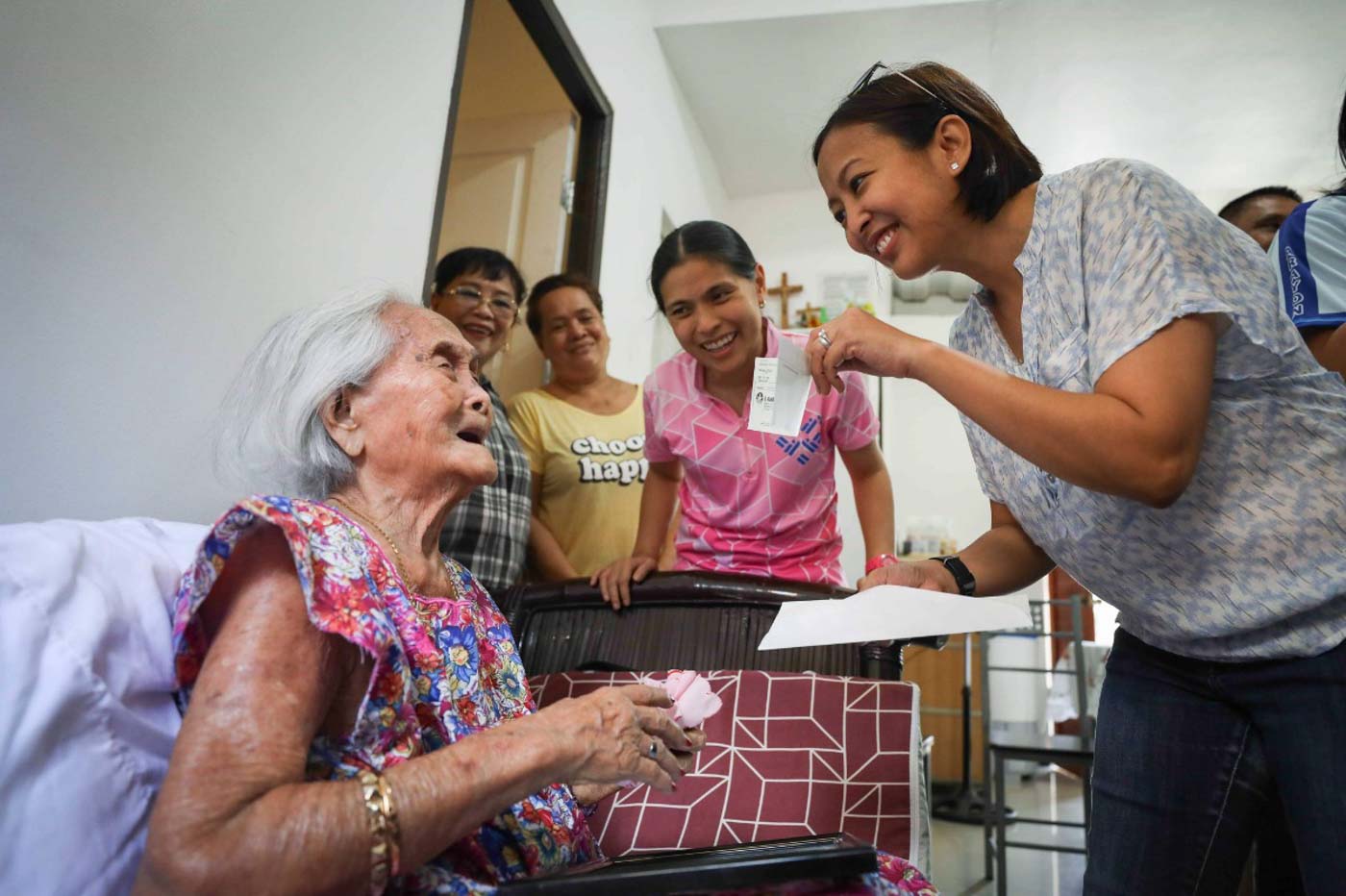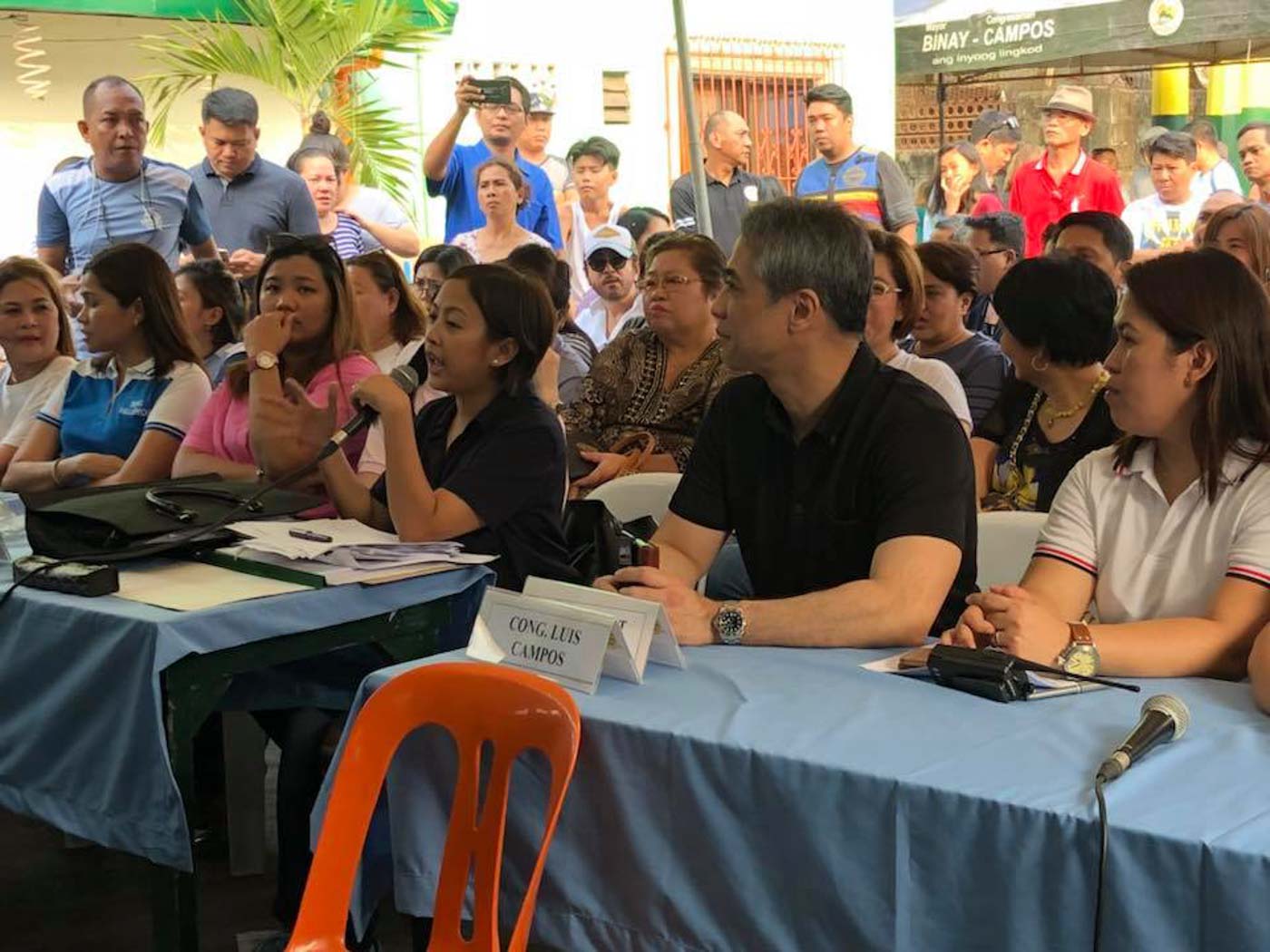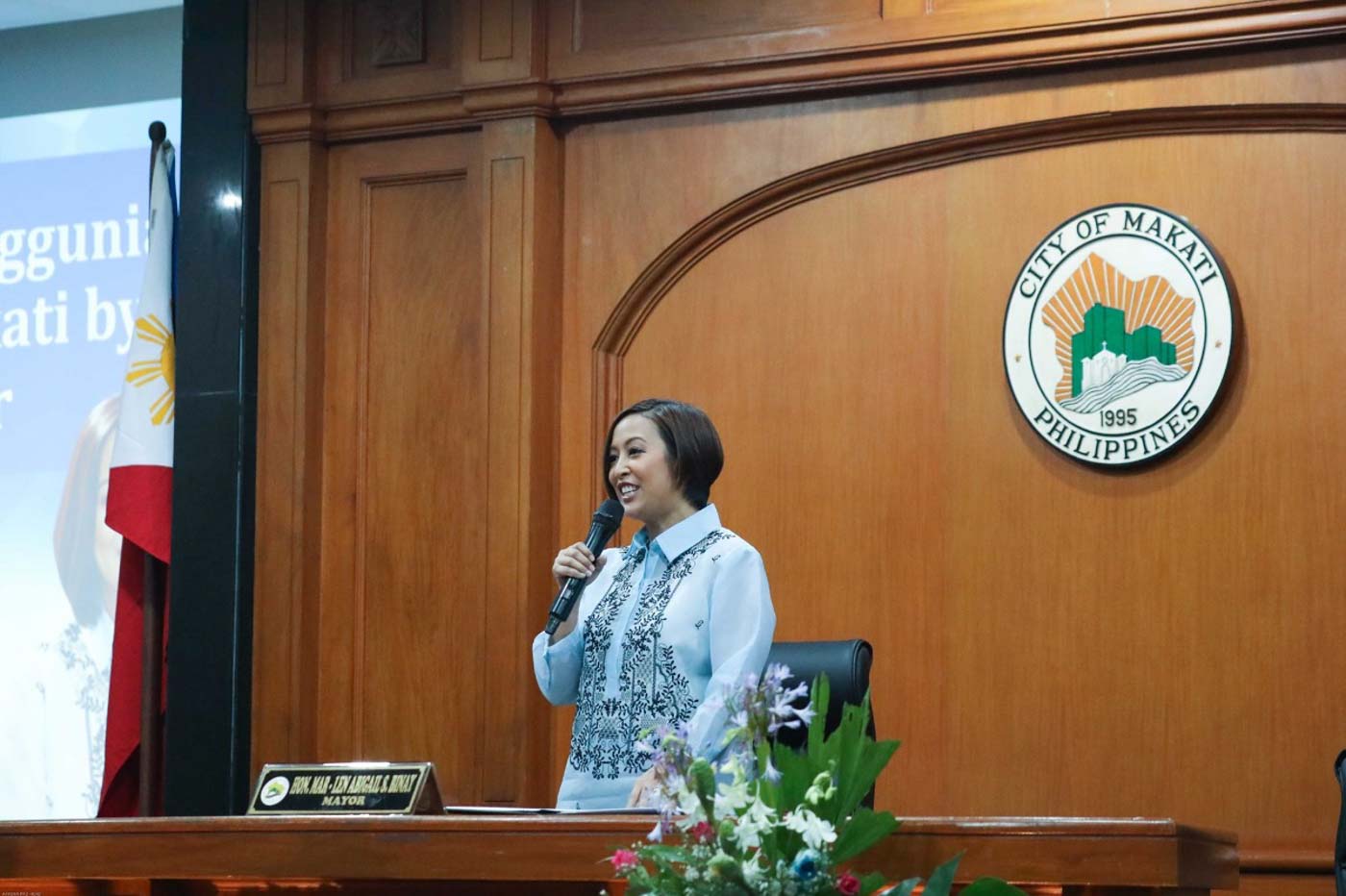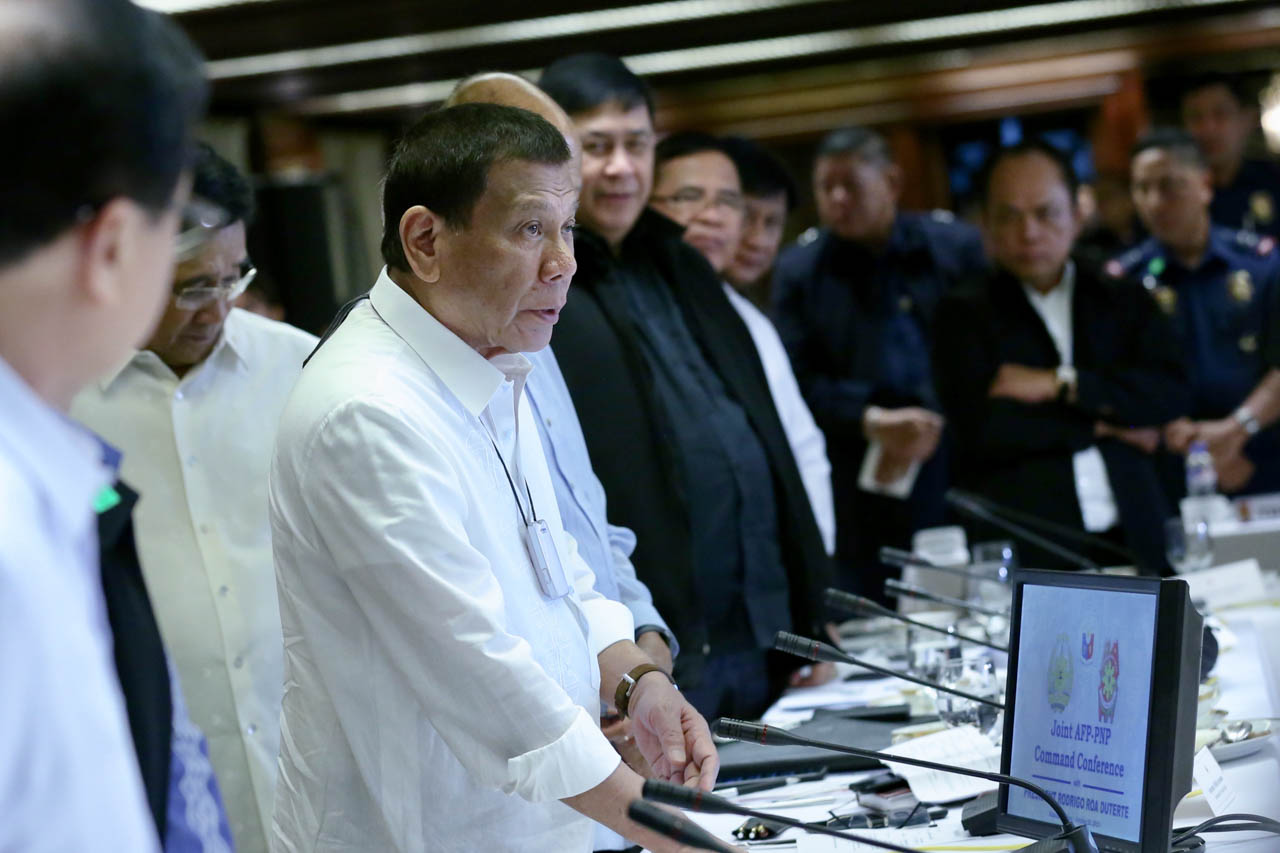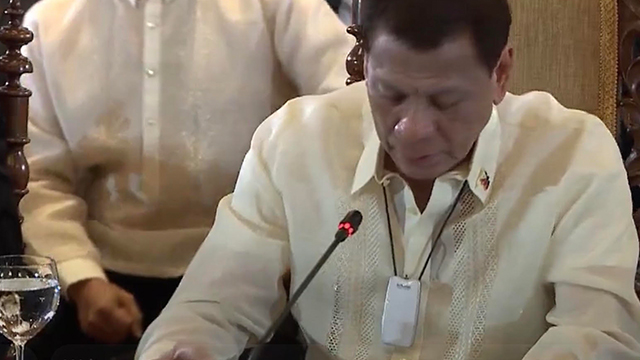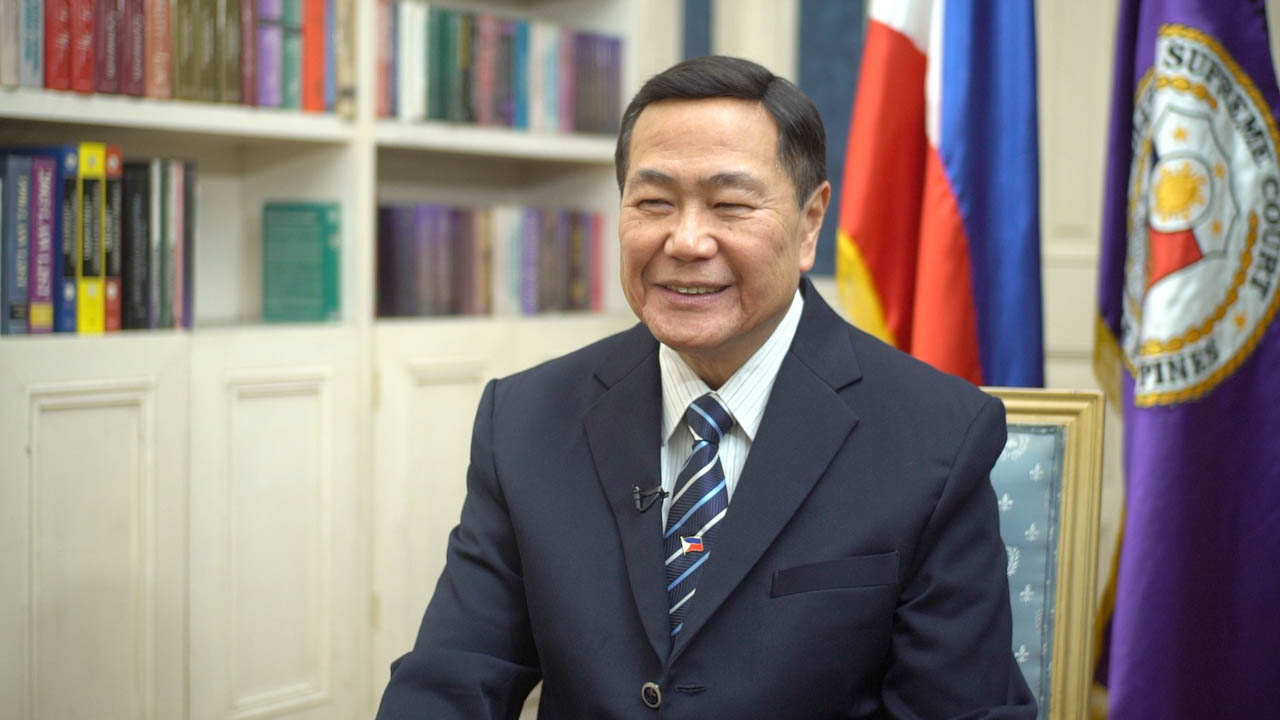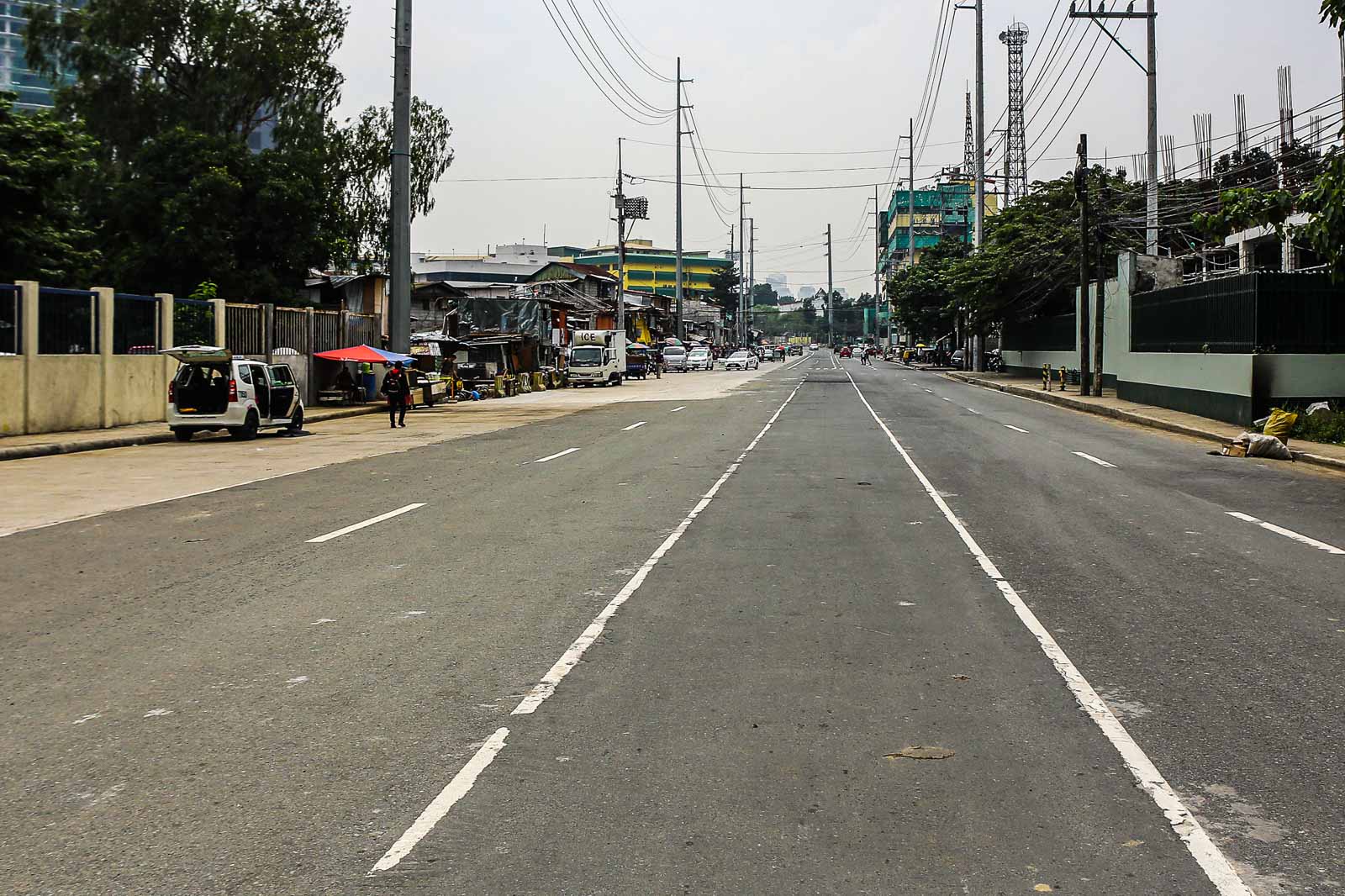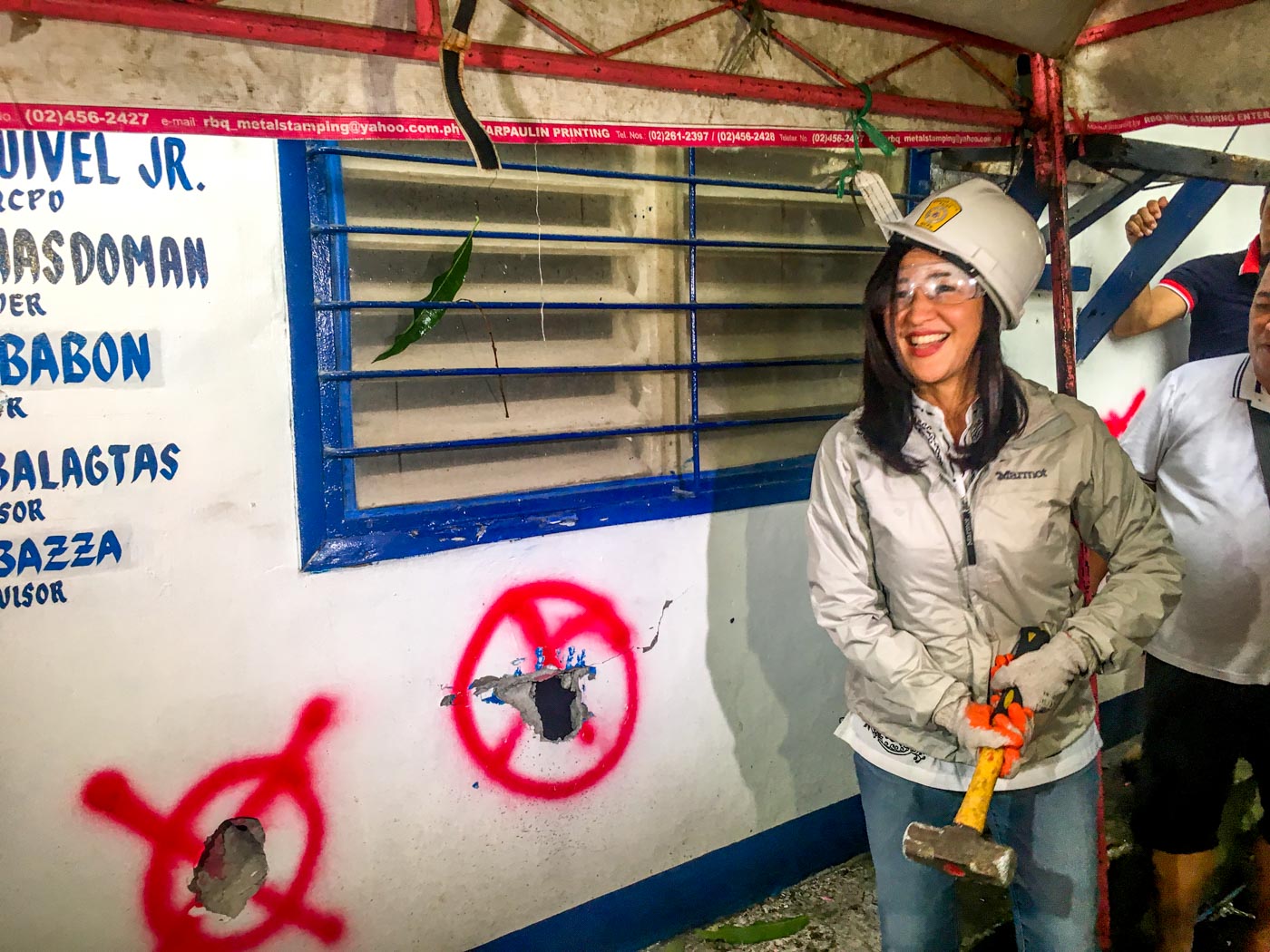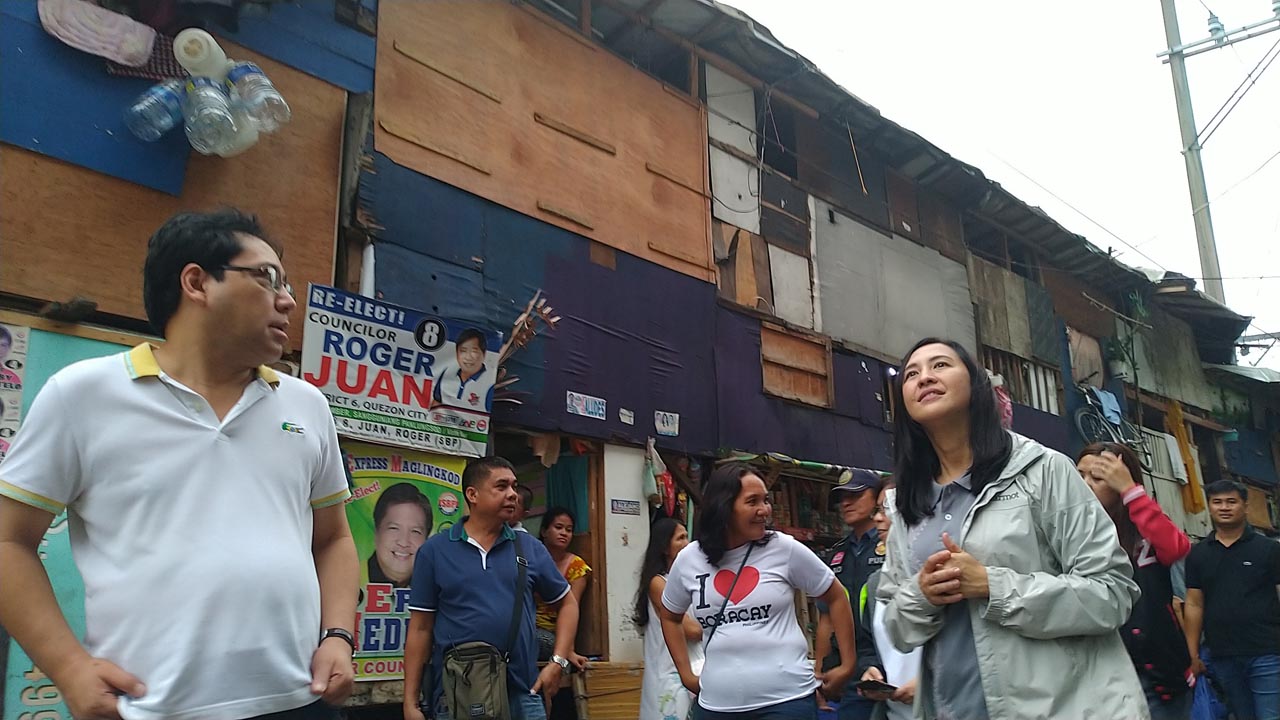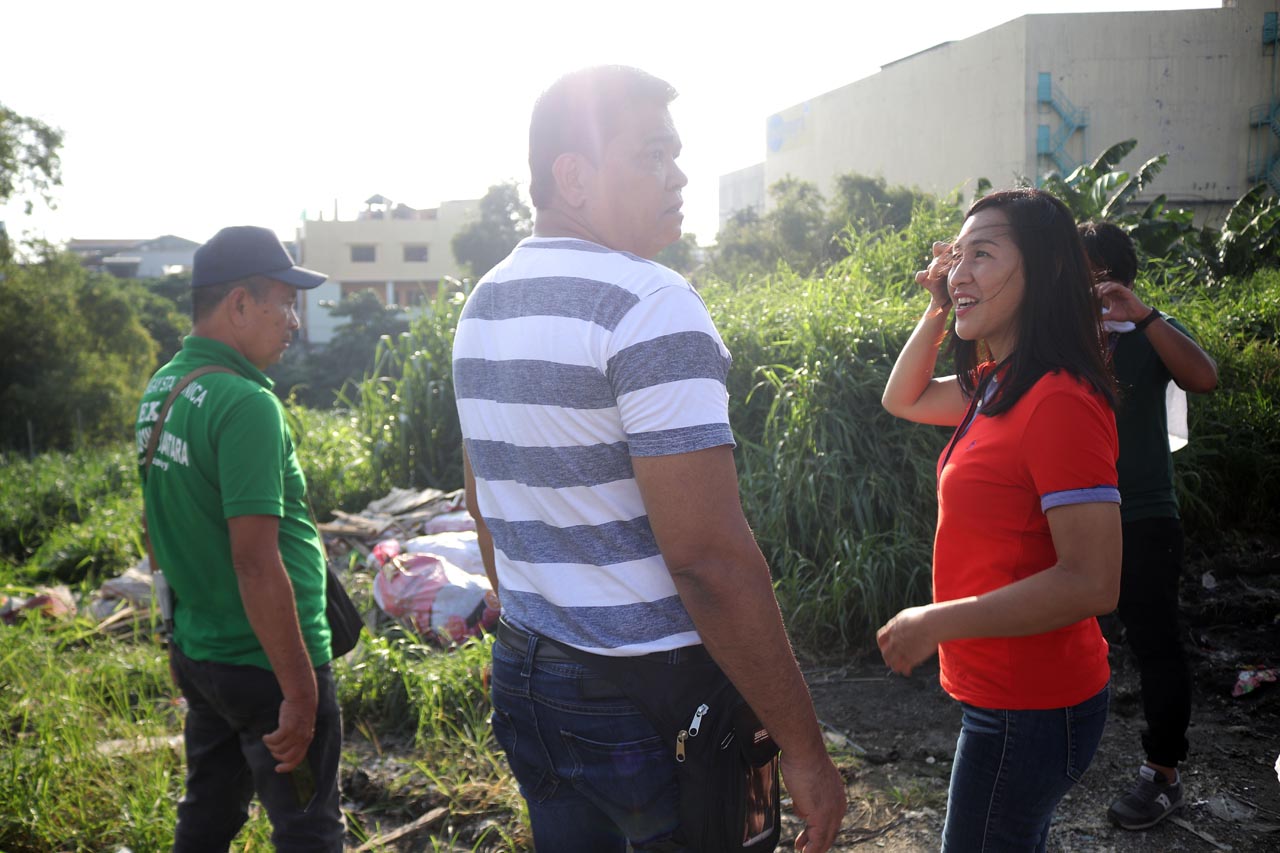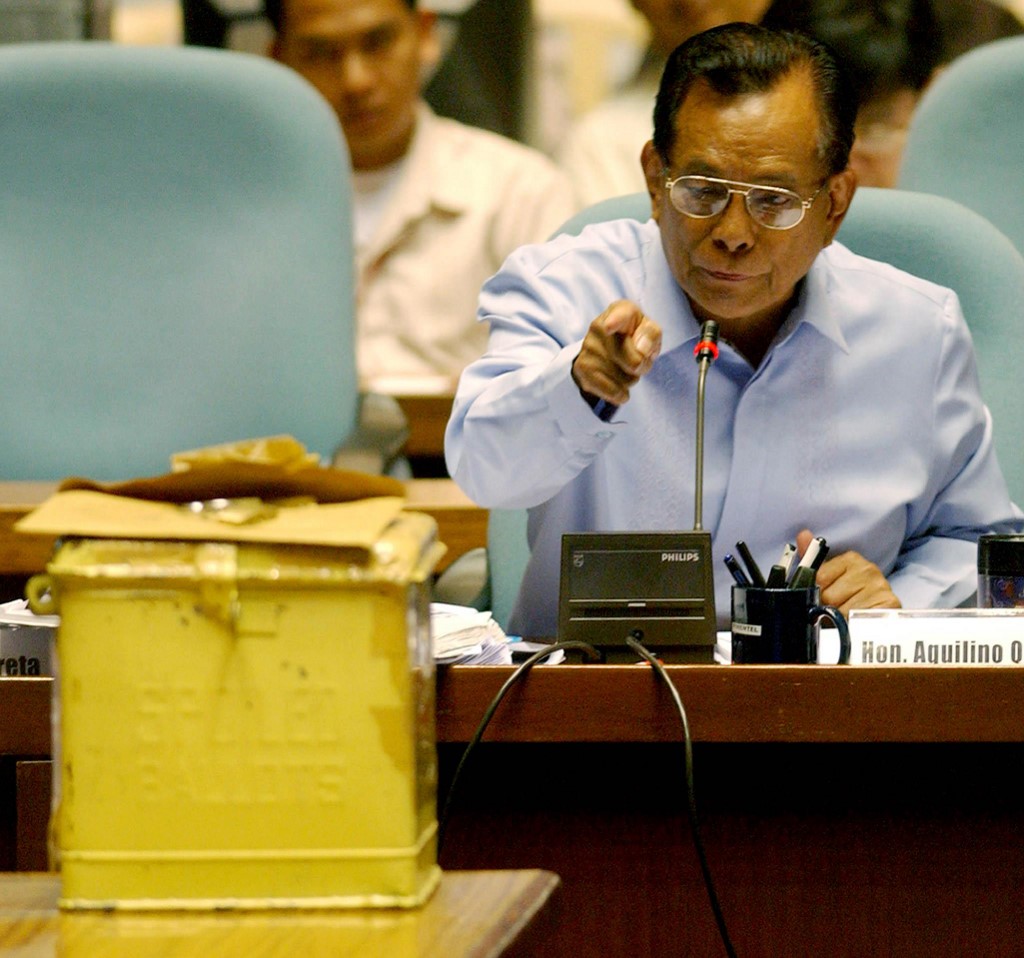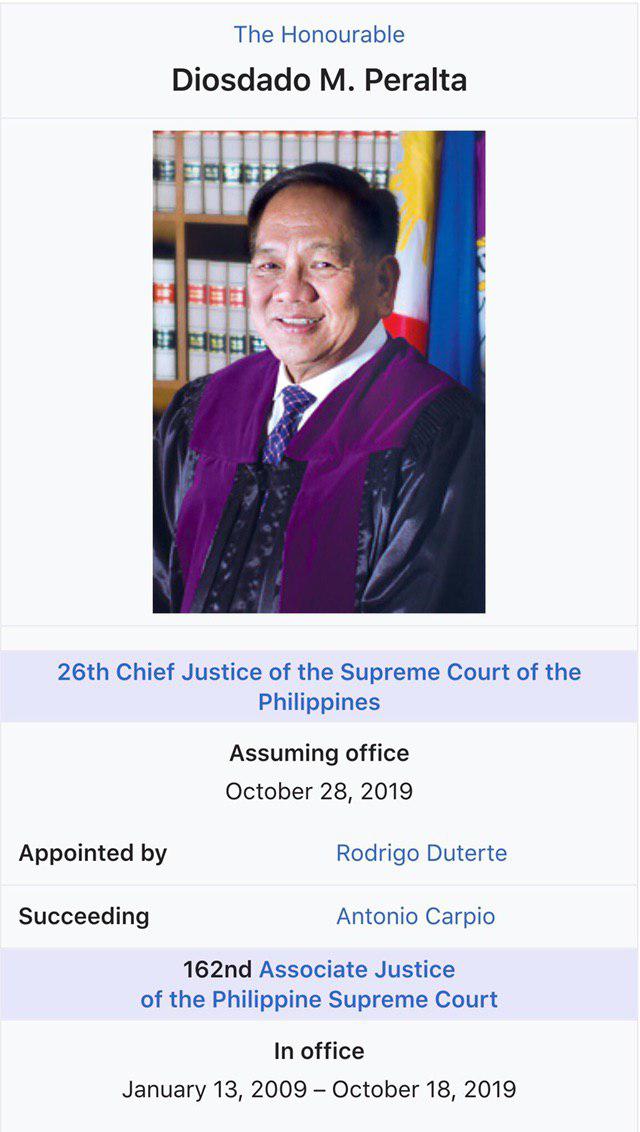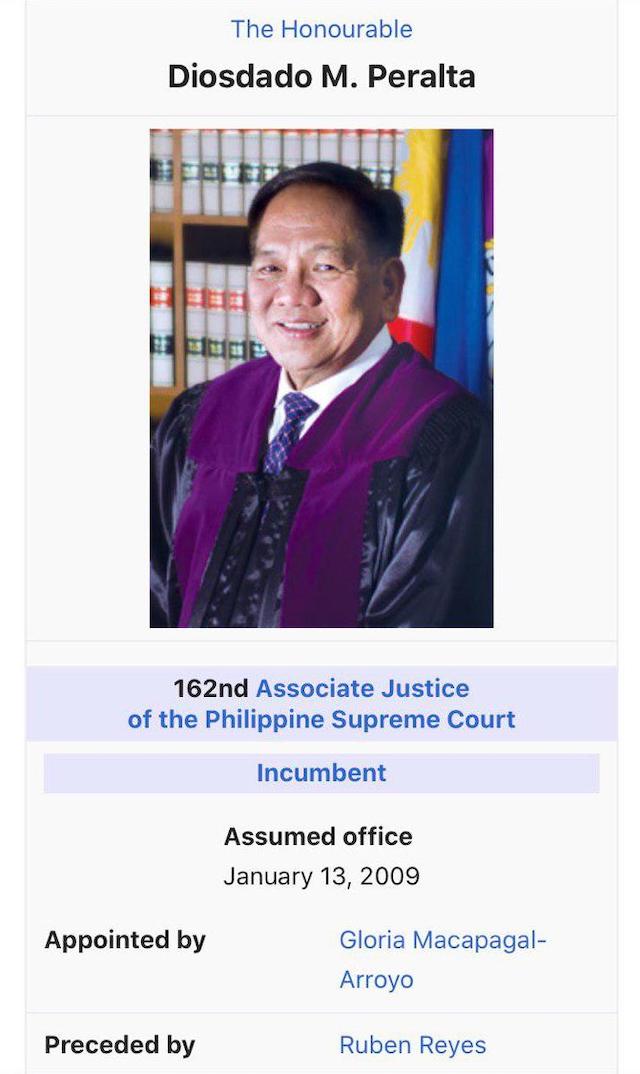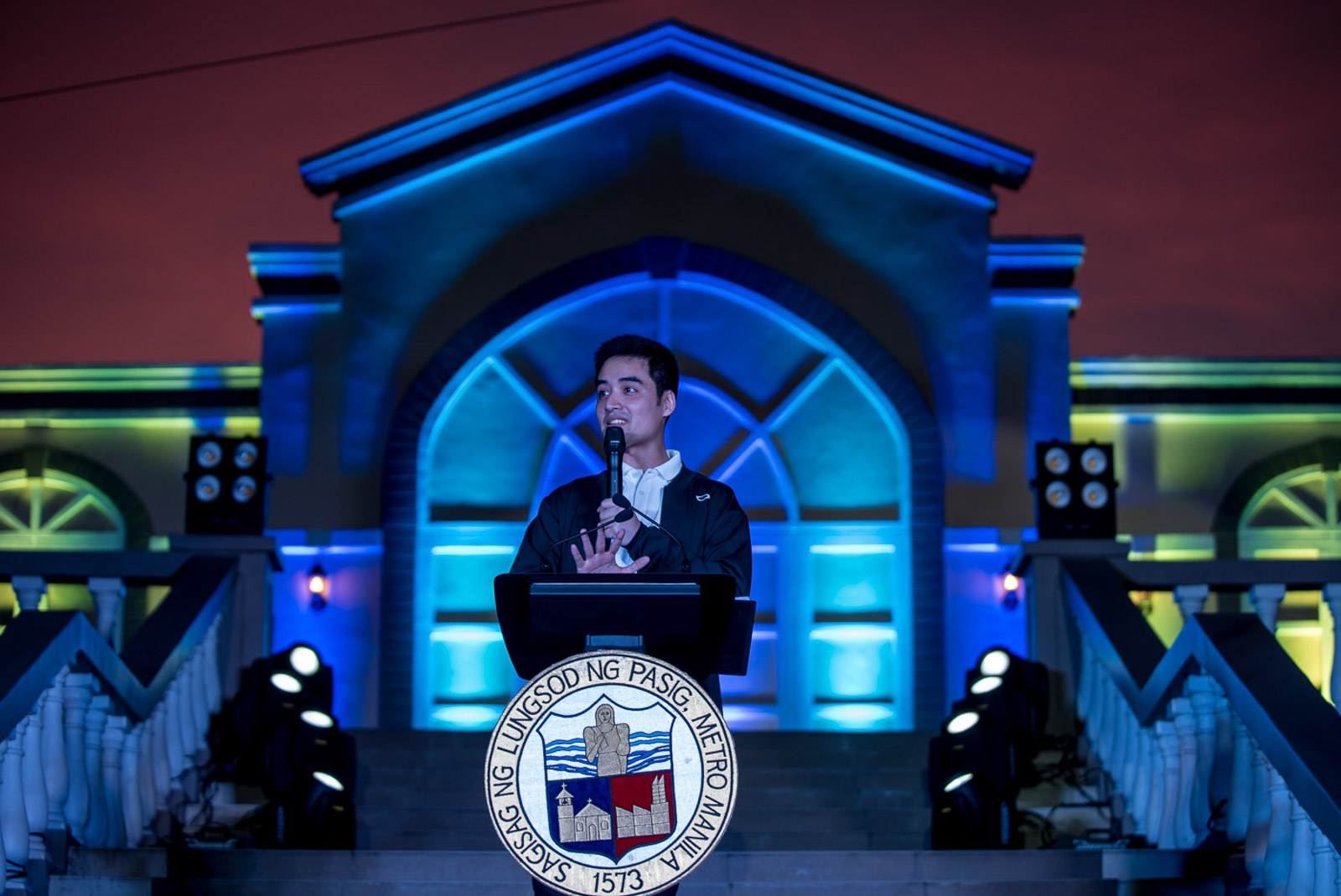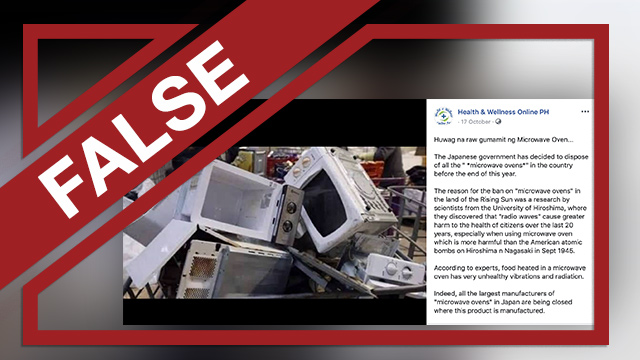MANILA, Philippines – This is not like any of Quezon City Mayor Joy Belmonte’s speeches, which she usually delivers in barangay multi-purpose centers, small auditoriums, or on makeshift stages along any of the city’s many landmarks.
Clad in elegant Filipiniana outfit, she walks up the stage at city hall and addresses guests of honor, the city council, the officials of 142 barangays in the city, and residents watching through their social media accounts. She goes over a long list of gains in her first 100 days. She asks the city council to fund her vision in the next 3 years.
This is her moment, giving her first State of the City Address. She is, at last, at the helm of the country’s biggest and most populated city, after 9 years of serving as second-in-command.
Since her inauguration, Joy Belmonte has shown herself as a strong-willed local chief executive, conciously working out an administration that's neither weighed down nor influenced by whatever legacy the two mayors before her left behind: Herbert “Bistek” Bautista, who had endorsed her, and her father, Sonny Belmonte, who had supported Bautista before.
Establishing her own identity
In an Inquirer.net interview before her mayoral campaign, Belmonte said she had purposely stepped out of his shadow. “I tried my best to veer away from being the daughter of my father…. I made a deliberate effort to try to carve out my own identity, and to adopt advocacies that were never adopted by my father, and to have a management style different from his,” she said.
She intends to distinguish herself as well from Bautista, to whom she served as vice mayor for 9 years.
During her State of the City Address, she cited how her administration improved the implementation of the zoning ordinance, implying that it was lax during Bautista's term.
“Alam kong ayaw ’nyong pumalakpak, na’ndito si Mayor Herbert Bautista,” she said. She continued, addressing Bautista who was in the audience: “Mayor, ’yan lang naman ang totoo.” (I know you all don’t want to clap, because Mayor Herbert Bautista is here. Mayor, it’s only the truth.)
She has seen first-hand the shortcomings of the past administration, and she is now working to fill the gaps This, while city hall still bears Bautista’s name – in tarpaulins, television promotions, standees. A recently-released booklet still features a message from Belmonte as vice mayor.
In both her inauguration speech and her State of the City Address, Belmonte made it a point to acknowledge what she inherited from Bautista's administration – the good and the bad.
While Bautista touted the seemingly large amount of money he had left for the city, Belmonte was quick to clarify that most of that amount was actually lodged in long-term investments, leaving cash equivalent to a mere P516 per Quezon City resident.
While Belmonte thanked Bautista for the infrastructure projects he had put up, she also pointed out the how some of them were left unfinished, and how transactions at city hall remained sluggishness during his term even with the new facilities.
Residents of Quezon City would remember how Bautista and Belmonte had a rift during their last term together, barely speaking to each other.
Belmonte had said in the past that she suspected that their strained relationship was because of their different styles of governance.
“I take my job as the checks and balances of the city very seriously, and because he’s more traditional in his approach, tingin niya, dapat rubber-stamp ka lang, kasi ano ka eh, Vice ka lang, parang sumunod ka lang,” she said. (He thinks I should be a rubber-stamp because I'm just a vice mayor who should just follow without question.)
Vice Mayor Gian Sotto says Belmonte is “very non-traditional,” citing her practice of going down to the city’s 6 districts to oversee initiatives and build relationships, something he emulates.
![NON-TRADITIONAL. Quezon City Mayor Joy Belmonte leads the demolition of a police precinct in Balintawak. Photo by Loreben Tuquero/Rappler]()
Barangay and Community Relations Department head Ricky Corpuz, who has been working with barangays for years, says Belmonte has been doing this since she was vice mayor: “Wala siya sa opisina, nasa labas siya.” (She’s not in her office, she’s always out [in the communities].)
When she speaks to her constituents, she is stern. She scolds them when necessary. But her tone is interlaced with concern and hope for a better city.
Recently, she warning illegal hog raisers in Barangay Payatas that they would face charges if they didn’t follow African swine fever (ASF) containment protocol: “Kayo po ay aming binibigyan ng babala ngayon, hindi dahil galit ako sa inyo, pero dahil gusto ko sa lalong madaling panahon, matulungan kayo at matulungan na lahat ng mga mamamayang lungsod namin.” (You are being warned, not because I'm angry at you, but because I want to help all Quezon City residents at the soonest possible time.)
In her first 100 days, she was able to make good on the promises she made at the beginning of her term, even as she was startled by unforeseen challenges, such as ASF and the national government’s directive of clearing obstructions from public roads in 60 days – the burden of which was heavier on Quezon City, which, with 166 square kilometers of land area, is the biggest in the National Capital Region. (IN NUMBERS: QC Mayor Joy Belmonte's first 100 days)
Smooth transition
![IN GOOD HANDS. Ex-mayor Herbert Bautista showed up to Belmonte's proclamation rally, backing her mayoral campaign. Photo by Maria Tan]()
Whereas Bautista put a prime on infrastructure and urban development, building health centers, multi-purpose halls, sports facilities, and recreational parks, Belmonte is focusing most of her initiatives on the better services and their faster delivery.
Andrew Arevalo, one of the city’s 12 appointed urban planners, says Bautista and Belmonte’s respective priorities are complementary – Belmonte will fill in with services for the people the infrastructures that Bautista had put up.
“It’s put in place, so kailangan na lang maramdaman ng tao kung ano ’yung mga institusyon na naitayo, malagyan naman ng serbisyong katapat,” Arevalo said. (The infrastructure is put in place, so we only need to provide appropriate services within or through these institutions for the people to utilize.)
Roel Cruz, another urban planner, says the two mayors are more mature than other politicians, who hold grudges and discontinue the projects of their predecessor.
“Dahil ang mga politician ng Quezon City are more mature, lahat ’yan may continuity na. Hindi naman siya ’yung napuputol na dahil programa ni Bistek ’to, ayaw ni Joy,” he said. (Because Quezon City politicians are more mature, everything has continuity. Just because a program was initiated by Bistek does not mean Joy will discontinue it.)
“Suwerte lang kami kasi ’yung mga nauupong mayor hindi mapaghiganti…. Kailangan ’to ng tao eh, ba’t mo ihihinto dahil ginawa nung kabila? Tuloy pa rin,” Arevalo added. (We’re lucky because our mayors are not vengeful. If the people need these programs, why would they be halted just because the past administration initiated them? Of course, they’ll be continued.)
Belmonte’s advocacy for better social services and good governance was apparent in her mayoral campaign, her inaugural speech, and everything that came afterwards. The current crop of councilors are aware that these have been her advocacies since she was vice mayor, who presided over them.
“When she ran for mayor and kasama namin siya, that was her promise, and we were all aware of it…. So pag-start pa lang ng term niya, naggalawan na rin kami,” District 4 City Councilor Ivy Lagman explained. (We were with her when she ran for mayor. We were aware of her advocacies, so at the start of her term we already moved towards those ends.)
The city council has so far delivered. Financial assistance for fire victims, burial assistance, senior citizen assistance, aid for informal settler families, and healthcare have all been raised, expedited, or lobbied for increase. Their disbursement rates are also significantly quicker than the past administration, clearing backlog from as far as 2017.
Belmonte has the benefit of having a city council that agrees with her vision.
“Iba talaga ’pag same page lahat eh,” Sotto said, speaking of the city council he presides. (It really makes a difference when you’re all on the same page.)
Lagman thinks it was a great deal that the city councilors were able to get to know Belmonte during her time as vice mayor.
“We worked closely with her before, so meron siyang soft spot sa council eh, kasi galing siya doon.... Kami din, mahal na mahal namin siya, so talagang close coordination talaga kami, so we work as one,” she said. (We worked closely with her before, so she has a soft spot for the council because she also came from there… And we love her, too, so we really have close coordination and we work as one.)
When Belmonte asked the council for a P27-billion budget for 2020, with P2 billion alloted for medicines, Lagman said the city council considered it as “very welcome news.” The councilors feel the shortage of medicines firsthand when people come to them for solicitations.
“The fact that nag-allot siya ng budget for it na malaki, meron nang ilalagay sa mga health center, sobrang nakakatuwa,” she said. (The fact that she alloted a huge amount that will go to health centers makes us very glad.)
Knowing Belmonte’s personality and priorities from the onset, Lagman says they were able to get behind her vision for the city even before she was elected as mayor. Now, they are more than willing to enact the policies needed to fulfill that vision.
“Kung ano ’yung goals, kung ano ’yung gusto niyang mangyari, kung ano’ng vision niya sa city, we’re all for it,” Lagman said. (Whatever her goals are, whatever she wants to achieve, whatever her vision for the city is, we’re all for it.)
Dreams of a cleaner city government
City hall is up for a intensive cleanup
“She’s really dead serious as far as services [are] concerned, as far as governance is concerned,” said Architect Pedro Rodriguez, head of the City Planning and Development Office.
Belmonte’s first executive order was to create an Internal Audit Service in line with her promise of accountability and transparency. Further, she seeks a more professional city workforce, composed of city employees who are promoted based on merits and not upon the recommendation of powerful backers.
Her intolerance for anything below these the standards of honest and efficient services shows when she does field visits. She filed a case against a private company that illegally charged vendors in a makeshift market every day. Corpuz said she spotted what he dubbed “organized crime,” pertaining to organizers who took advantage of illegal vendors.
On September 4, she ordered a probe into a local government official’s relative caught in the act of bribery in an entrapment operation. She threatened corrupt officials through a Facebook post.
“To all of you who continue to be a disgrace to our city’s community of genuine public servants, I have news for you. Our people are smarter now. They are braver now. And they are willing to fight for what is right. Little do you know that your acts are now being videoed, your conversations recorded, and your names documented. These have been submitted to me. So don’t be surprised if one day, you receive an unexpected ‘regalo’ from me. Remember that KARMA IS A BITCH,” her post read.
POGO workers who got by on conditional permits issued by the past administration were told to submit their remaining requirements, or else face closure.
Belmonte wants not just good but decentralized governance, one that is accessible to all Quezon City residents living anywhere in the 166.20-square-kilometer city. She plans to build “mini city halls” in every district.
During her first 100 days, her city council also passed the landmark Freedom of Information ordinance, which will allow residents to look into the workings of city hall for themselves.
Their good governance dream is closer to reality, she said, thanking the proponents of the ordinance in her State of the City Address.
Once in QC, forever in QC
![FOREVER IN QC. Mayor Joy Belmonte visits informal settler families in Balintawak. Photo from Quezon City Public Affairs Department]()
By and large, Belmonte plans to make her sprawling city smaller. In a forum, Belmonte said that she wants to make Quezon City a walkable place, with residential and business areas intermingled so that people won’t have to rely on taking private vehicles to work.
She also wants to change housing initiatives from the past administration to accommodate more informal settlers for in-city relocation.
One of the Bautista administration’s priorities was the development of the city’s socialized housing program, more commonly known as “Bistekville.” But Belmonte has something else in mind for informal settler families. She wants a township initiative, which she says is modeled after Singapore. She wants people who were born in Quezon City to grow old in Quezon City, and have the means to do so.
The Housing and Community Development and Resettlement Department (HCDRD) is completely onboard. They found that the Bistekville rowhouses took up too much space, and they were too costly for majority of the families to consider settling in.
Thus, they are looking into spaces where high-rise structures can be built, for a more affordable price. They are also studying ways for residents to avoid the tedious process of availing themselves of the PAG-IBIG Fund, and to rely on in-house financing instead.
However, Jojo Conejero and Joey dela Rosa from the HCDRD say that the challenge is to change the mindset of people toward accepting that they won’t have a land for themselves.
But Belmonte will not force residents to stay in the city. The point, Joey dela Rosa says, is that she’s giving them the option.
However, despite the city’s size, the city government is having a hard time with land acquisition, since it is competing with private developers. This will be one of the things the Belmonte administration will be reckoning with, if Belmonte's goal of in-city relocation will be fulfilled.
Beyond expectations
![PLANNING AHEAD. Belmonte inspects vacant lots that could be potential public markets and parking facilities, in light of vendors and cars displaced by road clearing operations.
Photo from Quezon City Public Affairs Department]()
Belmonte strives to do beyond what’s expected of her, and always plans a few steps ahead.
In the latest validation score by the DILG, Quezon City scored a medium-compliant score of 90. Belmonte thinks they deserve higher.
“Dito sa kanyang first 100 days, we were able to clean the city dun sa mga kapabayaan ng mga nakaraang administrasyon,” Corpuz said, explaining that neglect and indifference led to the presence of so many obstructions. (In her first 100 days, we were able to clean up the neglect of the past administrations.)
More than clearing roads, she opened alternative ones to decongest traffic, dubbed Bayanihan sa Lansangan roads. She didn't stop clearing operations by the 60-day deadline, saying they would go on, targeting inner roads next.
She announced the presence of ASF in Quezon City before the Department of Agriculture did, immediately implementing containment protocol and cordoning off the suspected infected area. While the DA did not appreciate this move at first, they have given her command of containing the virus in the city, knowing she is fully capable of doing so.
In another case, she made sure that vendors displaced by the road clearing operations were now registered and relocated. She has also committed to remodeling and upgrading public markets to encourage vendors and customers to do business inside, not on the streets. And to top it off, she tapped the CPDD to study alternative sites for vending and recommend rerouting for jeepney and tricycle lines, to promote a better economy for small-time vendors.
But while Belmonte strives to make her mark, she has no grand illusions of being able to do it alone. In fulfilling her vision for the city, she knows she needs more than the city government’s resources.
Thus, she employs the help of the private sector, seeks the aid of national agencies, and even takes a page or two from other local government units, acknowledging that these best practices are for the betterment of her city.
Leading by example
![SETTING THE STANDARD. Belmonte visits Barangay Holy Spirit, where they conducted self-demolishment in line with the road clearing directive. She thanked residents and lauded the barangay captain. Photo from Joy Belmonte's Facebook]()
Belmonte had spoken of her Viber group with Metro Manila mayors and their coordination regarding class suspensions, but, in truth, Belmonte is infinitely more active in her Viber group with all 142 barangay officials.
Corpuz says all of their concerns are acknowledged. Belmonte sees the message, responds with an affirmation or a follow-up question, then delegates accordingly.
But her work doesn’t end with virtual coordination and delegation. She still goes to the streets, talking to people, seeing for herself what still needs to be done, and implementing the city’s ordinances accordingly. Corpuz says she does this even when a lot of people will be angry, especially when business establishments and private organizations are crossing the law.
Government fixtures were demolished, and so was a village guardhouse, much to the dismay of the residents who belonged to the middle and upper classes.
Belmonte was unfazed. “Sabi ko, mag-move on na kayo kasi talaga naman outpost ninyo is in the wrong place and your real concern is security, so dun na tayo mag-focus sa security,” she had said, adding that they were still having dialogues with the residents. (I said, just move on because your outpost is in the wrong place and your real concern is security, so let’s focus on security.)
“Gusto ni Mayor, set aside ang politics. Gawin ’yung tama para sa future generations,” Corpuz reiterated. (The mayor wants to set aside politics and just do what’s right for future generations.)
Belmonte is forward-thinking, and it shows in her plans for the city. These include efforts to sustain the gains of the road clearing operations, as well as traffic management plans for chaos that the simultaneous constructions of 4 Build, Build, Build projects of the national government is expected to bring to city streets.
The plans also include short-term efforts that still have significant impact, such as preemptive dredging of canals, which already spared the city from floods brought about by a recent typhoon.
“Kung ganun ’yung mayor mo na all over the city, tapos lahat ng problema sa city mo, lahat ng mga tao, mga organisasyon, mga problema nila hinaharap [at] binibigyan ng solusyo…sinong barangay official ang hindi mai-inspire, hindi mamo-motivate na gayahin ang leader nila?” Corpuz said.
(If you have a mayor who faces head-on the problems of the people and provides solutions, which barangay official wouldn’t be inspired and motivated to do the same?) – Rappler.com
![]()

